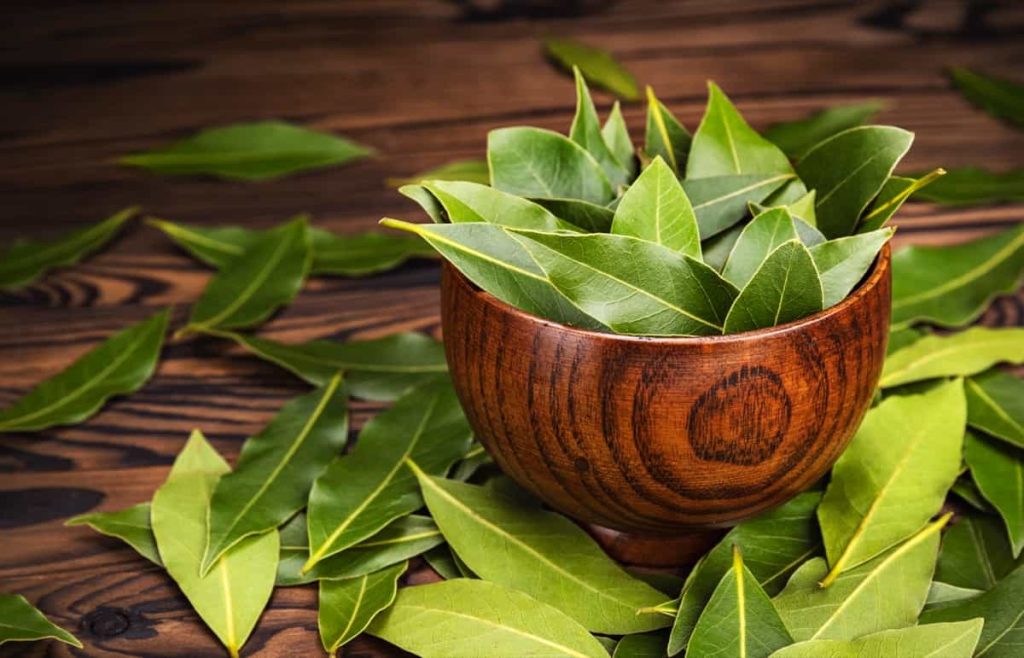Bay leaf plants, also known as bay laurel or Laurus nobilis, are a versatile herb perfect for adding flavor to soups, stews and more. Their aromatic leaves are a staple in many cuisines around the world. While bay plants are relatively easy to grow they can fall victim to some common pests. With the right prevention and control methods, you can keep your bay plant healthy and pest-free.

What Are Some Common Bay Leaf Plant Pests?
There are a few pests that tend to target bay leaf plants. Being able to identify them is the first step toward prevention and control. Some of the most common bay plant pests include:
- Spider Mites – Tiny spider-like pests that suck sap and cause stippling damage on leaves. They thrive in hot, dry conditions.
- Scale Insects – Small, immobile insects that attach themselves to stems and leaves. They secrete a sticky substance called honeydew.
- Mealybugs – Soft-bodied, cottony insects that feed on sap. They also leave behind honeydew.
- Aphids – Pear-shaped, soft-bodied insects that feed in clusters on stems and leaves. They transmit plant diseases.
- Whiteflies – Tiny flying insects that feed on plant sap They excrete honeydew which promotes sooty mold growth
- Caterpillars – Larval worms that chew on leaves. Some common culprits are loopers, leafrollers, and hornworms.
- Thrips – Tiny winged pests that rasp plant tissue and suck sap. They cause silvery spotted leaves.
How Can I Prevent Pests on My Bay Plants?
An ounce of prevention is worth a pound of cure when it comes to bay plant pests. Here are some tips to keep pests away:
- Select pest-resistant bay plant varieties when available.
- Check new plants thoroughly for signs of pests before bringing home.
- Keep plants healthy with proper light, water, and fertilization. Healthy plants resist pests better.
- Remove any infected plant debris and prune affected parts immediately.
- Clean plants regularly by spraying water or wiping leaves.
- Avoid overcrowding plants to allow for good air circulation.
- Use row covers or netting as physical barriers against flying pests.
- Introduce beneficial insects like ladybugs, lacewings, and parasitic wasps which prey on pests.
- Rotate bay plants to different areas of the garden each season to disrupt pest cycles.
What Are Some Organic Ways I Can Control Bay Plant Pests?
If prevention fails and pests attack your bay plants, there are several organic control methods to try:
- Handpick pests – For minor infestations, remove pests by hand or use a strong stream of water to knock them off.
- Insecticidal soap – Non-toxic soaps that kill soft-bodied insects like aphids, whiteflies, and mealybugs on contact.
- Neem oil – Derived from the neem tree, this organic oil coats insects, deterring them from feeding.
- Diatomaceous earth – Powdery silica dust that damages the waxy outer layer of soft-bodied pests.
- Pyrethrin – A natural insecticide made from chrysanthemum flowers that kills a broad range of pests.
- Horticultural oil – Suffocates and kills immature soft-bodied insects and mites. Safe for most plants.
- Kaolin clay – Fine clay spray that forms a barrier making plants less appealing to pests. Also causes dehydration.
- Bacillus thuringiensis – Bacterial insecticide effective on caterpillars when they ingest treated leaves.
Always read and follow label directions when using organic pest control products. Test on a small area first to ensure plant safety.
When Should I Use Pesticide Sprays for Bay Leaf Pests?
Turn to pesticide sprays derived from synthetic chemicals only as a last resort if all other methods fail. These products are not selective and can kill beneficial and pollinating insects. If pesticides are necessary:
- Identify the specific pest and select the right product accordingly.
- Read and follow all label instructions carefully regarding dosage, timing, and precautions.
- Only mix and apply as much as needed to avoid waste, runoff, and groundwater contamination.
- Limit use to problem areas instead of spraying all plants.
- Wear protective clothing like gloves, long sleeves, and a mask when spraying.
- Avoid applying pesticides during the hot daytime to prevent rapid volatilization. Spray in early mornings or evenings.
With diligent monitoring for early signs of pests, prompt removal of affected plant parts, and using organic control methods, you can keep your bay plants lush and pest-free. Always opt for the least toxic solutions first. Combined with good cultural care, your bay leaf plants will thrive and add flavor to your cooking for years to come.
WHAT IS EATING MY PLANTS? | Common Garden Pest Control using Leaf Signatures
FAQ
What are the pests in the bay leaf plant?
How to treat bay leaf spot disease?
How to care for a bay leaf plant?
